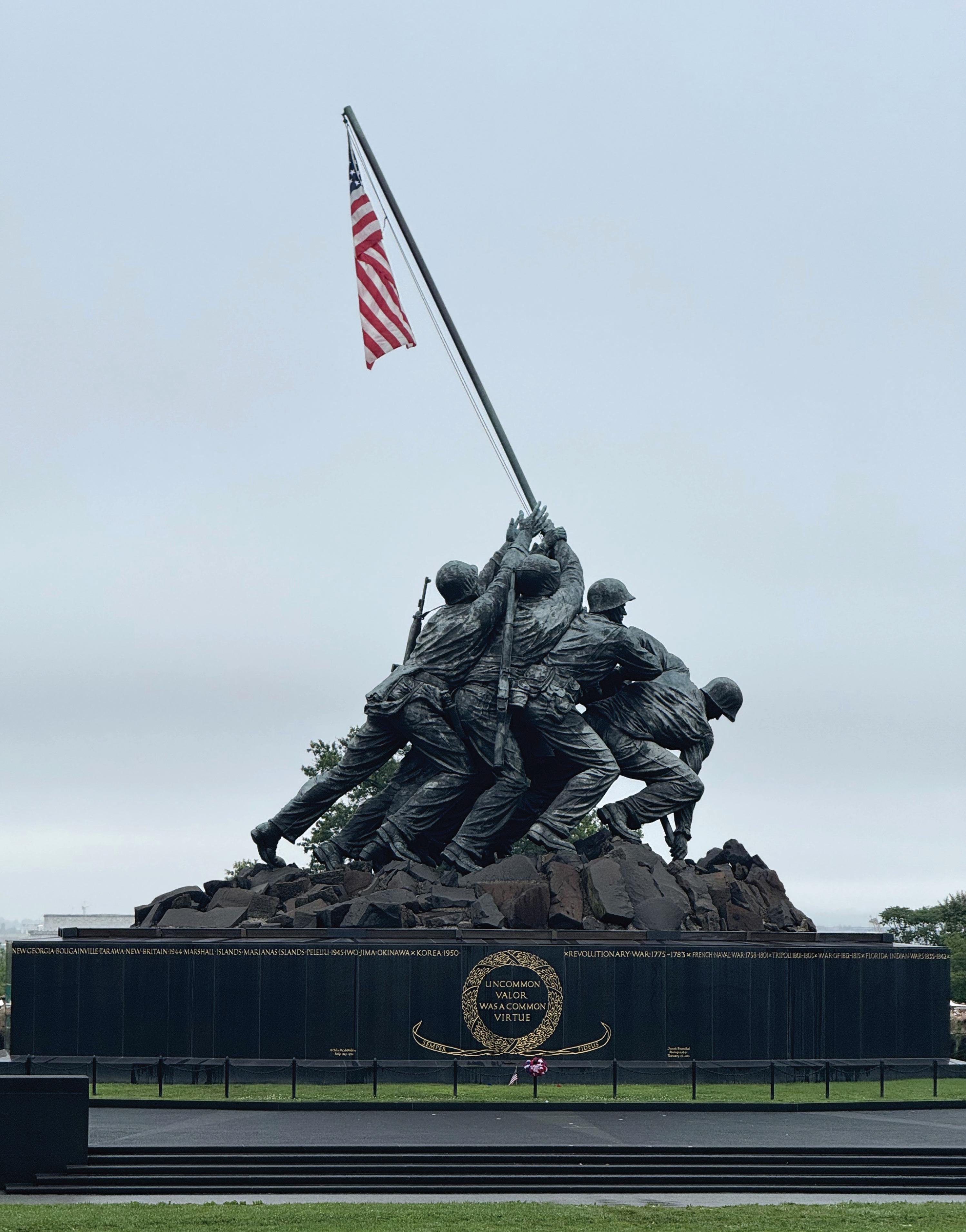




Beauregard Electric Cooperative Inc. celebrates Youth Tour delegates
Page 20
























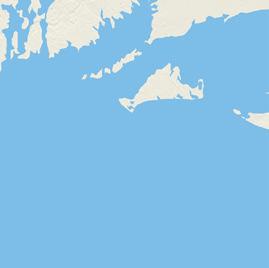







An exploration of 15 ports of call, with guided excursion options at each
All onboard meals and our signature evening cocktail hour
Full enrichment package with guest speakers and nightly entertainment
All tips and gratuities

Immerse yourself in the sights, sounds, and tastes of New England. From quaint island villages to the breathtaking beauty of the coastline, summer in New England is a truly delightful experience. Discover the region’s rich maritime heritage, savor a traditional Lobsterbake, and marvel at grand mansions of the Gilded Age. Return to the comfort of your onboard sanctuary and bask in the warm camaraderie of fellow guests and crew.
There’s a song that says, “Just a small-town girl, living in a lonely world.” And in many ways, that’s how I felt growing up in my small Louisiana town. But what I’ve learned is that even a small-town girl can dream big and find herself in places she never imagined— like Washington, D.C.
My name is Lylah Crain, and I am from Pine, Louisiana. It’s the kind of place where everyone knows your name, and on the rare chance you ever pass through, if you blink, you might just miss it.
In my little town, opportunities don’t exactly line the streets. You have to look a little harder and dream a little bigger. When opportunities like going on Youth Tour present themselves, you have to run full speed at them.
When I got the call telling me I had been chosen for Youth Tour, I was ecstatic. But I had no idea just how much this experience would open my eyes and change the way I feel about myself and my future.
It’s easy to feel small in a place like Washington, D.C. It’s a big city full of rich history and important people. But as the days went on, I came to learn that even someone from the smallest place can belong in the biggest room.
On Youth Tour, we spent a whole day on Capitol Hill.
I’ll never forget seeing that beautiful building for the first time. It was on those steps that my fellow Louisiana delegates and I got to meet Sen. Bill Cassidy. I asked him, “What is your favorite part of your job?” and he looked me in the eye and said, “Meeting people just like you.” His words inspired me and reminded me why leadership is about connection and impact.
That sense of connection stayed with me as we later met interns from Louisiana working on Capitol Hill. Hearing their stories made it clear that this isn’t just a distant dream—it’s truly possible. Their experiences encouraged me to think bigger about my own future and
imagine how I might serve and represent others one day. These experiences made me reflect on what kind of leader I truly want to be. And my thoughts led me straight back home—to my small town, where those values first took root. It’s where I learned the importance of community, the value of hard work, and the power of personal relationships. In a small town like mine, you grow up understanding that showing up for others matters, that dreams require grit, and that how you treat people will follow you wherever you go. But more than anything, you learn that real success isn’t measured by where you stand— it’s measured by who you bring with you.
Now, as the new Louisiana Youth Leadership Council Representative, I realize that I represent so much more. I don’t just represent my small town, but every small town in Louisiana and every person who has ever felt small in this big world.
Staff
COMMUNICATIONS COORDINATOR Conley Bourgeois
ACCOUNTING MANAGER Beth Fraser
President Michael Heinen
Vice President Roger Dale DeHart
Secretary/Treasurer Richard Sitman



ALEC Members
BEAUREGARD ELECTRIC COOPERATIVE INC.
Mike Viator Tommy Cryar
CLAIBORNE ELECTRIC COOPERATIVE INC.
Mike Marcotte Lane Davidson DEMCO
Daniel Berthelot Richard “Dickie” Sitman
JEFF DAVIS ELECTRIC COOPERATIVE INC.
Michael Heinen Byron Hardee
SOUTH LOUISIANA ELECTRIC COOP ASSOCIATION
Trevor Benoit Roger Dale DeHart WASHINGTONST. TAMMANY ELECTRIC COOP INC. Joe Jarrell Dennis Glass
Associate Member

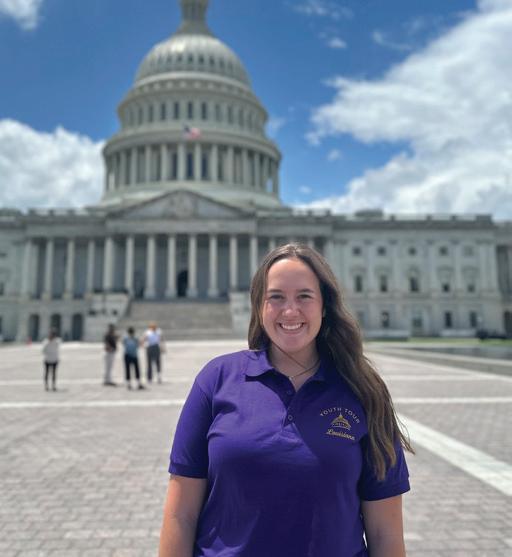
I would like to thank all of you for this amazing opportunity. Thank you for giving me the honor of representing our state. I would especially like to thank my co-op, Washington-St. Tammany Electric, for sponsoring me on the trip of a lifetime. I hope to use what I’ve learned to encourage other young people from small towns to dream big, step forward and believe they belong anywhere they choose to go.
And I would remind them of the words of the hit band Journey: “Don’t stop believin’.”
Thank you.





Donald Bush | District One
Ricky Deggs | District Two
J.R. Hickman | District Three
Alan Dane Slaydon | District Four
Jeff West | District Five
Dan O’Dell | District Six
Doug Sonnier | District Seven
Jeron “Scott” Kyle | District Eight
Tommy Cryar | District Nine
BEAUREGARD ELECTRIC CO-OP LEADERSHIP
Mike Viator | General Manager
Kay Fox | Vice President of Marketing and Member Services
Kelly Lewis | Vice President of Finance and Corporate Services
Kevin Aycock | Vice President of Engineering and Technical Services
Bobby Brown | Vice President of Operations and Construction Services
BEAUREGARD ELECTRIC OFFICES
Main office
1010 E. 1st St.
DeRidder, LA 70634
Phone: 800-367-0275
Moss Bluff
975 N. Perkins Ferry Road
Lake Charles, LA 70611
Phone: 337-855-6684
New Llano
12542 Lake Charles Hwy.
Leesville, LA 71446
Phone: 337-239-3451
At Beauregard Electric Cooperative Inc., we’ve made a strong push toward cost-cutting initiatives over the past few months—and this is just the beginning. Reducing expenses is an ongoing effort, and we’re committed to finding ways to operate more efficiently.
You may have already noticed a drop in the rate per kilowatthour since June—that’s a big win. However, it’s only one piece of the puzzle. Another key area is how we run the business day-today. A project that recently launched—and one you can directly help with—is paperless billing.

If you have an email address, signing up is quick and easy. Once enrolled, you’ll receive your bill by email instead of through the U.S. mail. If you want to take it a step further, you can also sign up for AutoPay—a convenient option.
I use both and love it. I get my bill by email around the 8th of each month, and my due date is the 28th of each month. If you choose AutoPay, you can select any day before the due date to pay your bill, which I pay on the 10th.
So why am I pushing this?
Simply, we currently spend around $250,000 annually on paper billing—roughly $60,000 on printing and paper, and $190,000 on postage. With more than 44,000 meters, those costs add up fast.
While I do care about saving trees, my focus is reducing costs for our members. This is one area where you can make a difference.
You may have already seen promotions on social media, app pop-ups, our website or information in your bill. We’re doing everything we can to spread the word. There’s also a direct link on our website to sign up.
If you are not already enrolled, I encourage you to consider making the switch. It may seem like a small step, but when many members participate, the savings add up. Of course, if you prefer to keep receiving a paper bill, that’s completely your choice—and we respect that.
Thanks for your time and support.





partnership with Pioneer Utility Resources.
Annual Subscriptions: Members $2.59. Nonmembers $5.
Postmaster: Send form 3579 to 10725 Airline Hwy. Baton Rouge, LA 70816.
Periodicals postage paid at Baton Rouge, Louisiana 70821 and additional mailing offices. Volume 42, Issue 5

BECi o ices are closed Sept. 1, in observance of Labor Day.



You Could Win a $50 Bill Credit

Beauregard Electric offers its members an opportunity to win the co-op’s Lucky Account Number Contest by publishing four account numbers somewhere on Pages 20-21 of Louisiana Country. The account numbers are listed within the story on those pages, not on the magazine cover. To win, you must locate your account number (listed on your electric bill) on these pages and then contact the co-op. To claim your prize, call 800-367-0275 or 337-463-6221 by Oct. 15.

I’ve never known a man who died regretting time spent with his family.
Buckets are symbolic of the relationships in your life.
As a young science teacher and coach, I posted the following in my classroom: “Hey, I don’t care how much you know until I know how much you care.”
It’s anonymous but remains in my heart.
You must care about people to reach them. That’s called empathy, and that’s what life buckets are about.
Your life bucket should be full of love and care.
Buckets. You’re carrying one. And so am I—as is everyone else.
Our respective buckets aren’t filled with water. What we are carrying is much more precious than water. These buckets contain your life.
Let’s call them life buckets. You may choose to call them love buckets.
There are many items in your life bucket: love, time, faithfulness, empathy or finances.
Those are only good starting points. You can add your own.
These life buckets contain your legacy. I’m not referring to what you leave behind when you die. Legacy is about what you’re doing today to pour into the buckets surrounding you.
This is not about the proverbial “bucket list” of what you do before you die. Those types of bucket lists are fine. I love any to-do list stating things we want to do in the future.
Your life buckets are about what you’re doing today. Life buckets are about what you’ve chosen to pour into.
Pouring. That’s an action verb. As in “I’m pouring.”
I’m referring to buckets that have their foundations in the heart and care about the people and things around them that matter most.
In my life plan sketchbook, I draw a series of buckets. I draw them by hand. I enjoy the act of drawing buckets, circles and boxes in my sketchbook. It makes it all seem more personal.
I draw an assortment of buckets on the page.
You can view a rough draft of My Clan’s life buckets on our Creekbank Faces Facebook page. When you visit the Facebook page, please like us. This helps spread the word about the stories we share at The Creek.
The buckets on my sketch’s right circle are the most important buckets in my life: people and relationships.
Remember that everything rises and falls on relationships.
The right page of my sketchbook is filled with the names of people I care deepest about. They’re clearly labeled.
Some are smaller buckets, but I make sure to keep them full.
You met many of these people in the previous chapter about circles.
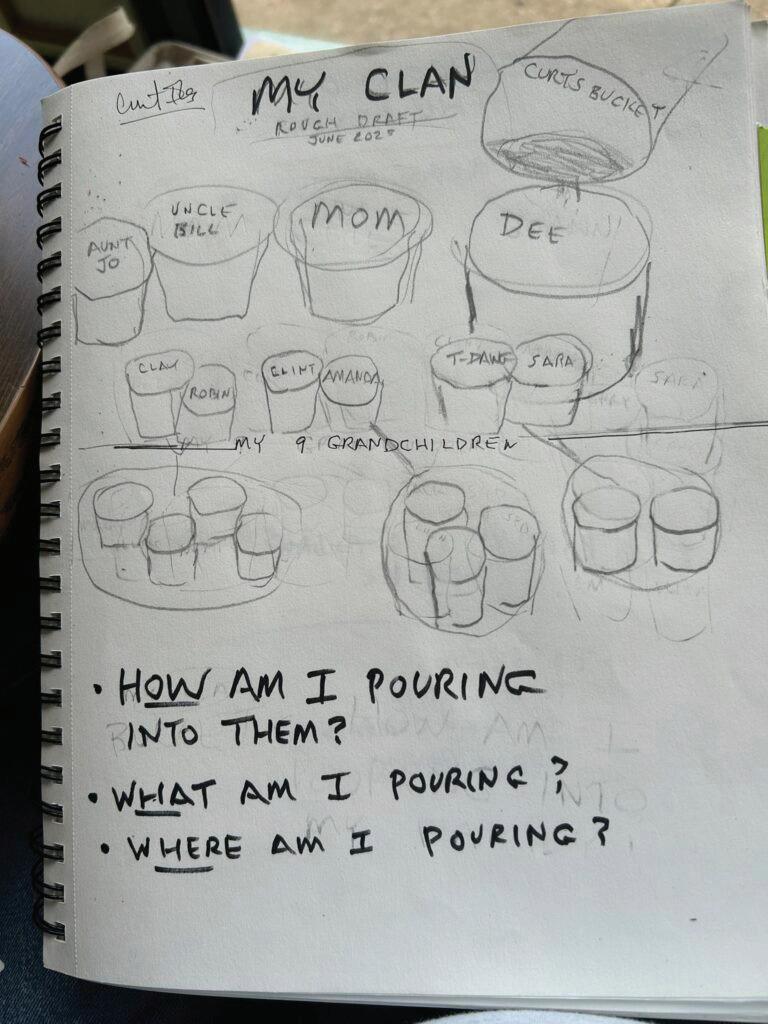
“Circles” is Chapter 40 in “The Three Trees.”
I call my inner circle by many names: my close family, my tribe and my clan.
They are my people. Those people in my inner circle are part of my life statement: “Be a man who is respected by those who know me best.”
That’s a tall order.

That’s why I sketch my buckets on a journal page.

Curt Iles lives in Central Louisiana. He is a graduate of Louisiana College and McNeese State University. He has served as a teacher, coach, principal, camp director, missionary and writer. To see more work by Curt, visit www.creekbank.net.




















and ALEC
The Louisiana Member Services Association and the Association of Louisiana Electric Cooperatives recognized cooperative employees and their families for outstanding volunteer service at this year’s annual meeting. In a unanimous and heartfelt decision, LMSA members voted to permanently rename the volunteer awards as the Kevin Reeves Cooperative Spirit Awards—a tribute to a beloved Beauregard Electric Cooperative employee whose life and work embodied selfless service.
Kevin spent 33 years at Beauregard Electric. He was a friend to many in the cooperative family and a steady presence in his church and community. His unexpected death in June 2023 left a void, but his impact endures—made visible now each year in the award that bears his name.
This year’s Kevin Reeves Cooperative Spirit Award winner is Frank Fowler of DEMCO. Frank has spent nearly two decades pouring time and talent into the Good Samaritan Youth Camp—organizing activities, serving on the leadership board, recognizing standout campers, cooking, cleaning, fundraising and playing drums during worship services. His commitment to service reflects the spirit these awards are meant to celebrate. Washington–St. Tammany Electric Cooperative was also recognized with a Kevin Reeves Cooperative Spirit Award for its



Frank Fowler, DEMCO—Spent nearly 20 years serving the Good Samaritan Youth Camp through programming, leadership, awards, cooking, cleanup, fundraising and music ministry.
Ty Harrington, Beauregard Electric Cooperative— Organized a St. Jude Children’s Research Hospital “Push-Up Challenge,” recruited fellow lineworkers and launched a GoFundMe campaign that drew community support and raised more than $1,000.
William Howell, Washington–St. Tammany Electric Cooperative—Director of the free “Liars and Lunkers” kids fishing tournament, first organized by his family more than two decades ago; secures sponsors and participants to





ALEC recognizes training milestones, RESAP completions and lost-time-free records
At the 2025 Association of Louisiana Electric Cooperatives Awards and Safety Banquet in July, cooperatives and individuals were honored for yearlong accomplishments in safety and training. ALEC’s safety program—one of the most relied-upon services it offers—equips employees who work in dangerous environments to do the job right and return home safely.
ALEC member cooperatives participate in the Rural Electric Safety Achievement Program—a rigorous, third-party review conducted every three years by certified loss-control professionals. The team evaluates facilities, equipment and day-to-day procedures with one goal: continuous improvement.
This year, Jeff Davis Electric Cooperative and South Louisiana Electric Cooperative Association completed the RESAP inspection and each received a flag to display at their headquarters.
ALEC commends all member cooperatives for their achievements and continued commitment to safety.

Bobby Brown, Beauregard Electric Cooperative’s vice president of operations accepted the Traveling Statewide Safety Award on behalf of BECi. The winner is determined by a formula that weighs employee incidents, incident severity, total man-hours and vehicle accidents.
ALEC recognized member systems that worked without a lost-time accident:
• South Louisiana Electric Cooperative Association—More than 4,715,603 work hours since December 1996
• Beauregard Electric Cooperative—More than 555,979 work hours since November 2022
• Claiborne Electric Cooperative—More than 827,780 work hours since June 2024
• Washington–St. Tammany Electric Cooperative More than 249,132 work hours since April 2024
(A lost-time accident is an incident that results in an employee missing work beyond the day of injury.)

Beauregard Electric Cooperative Inc. is proud to support local educators through its Educational Grant Program, designed to spark innovation and creativity in classrooms across the co-op’s service area.
Each year, BECi awards six $500 mini-grants to outstanding educators who are passionate about enhancing the learning experience for their students. These grants fund new and innovative educational projects that go beyond the standard curriculum.
The program is open to pre-K through 12th-grade educators who teach at schools powered by BECi or located in communities served by BECi.
Homeschools are not eligible for this grant.
The possibilities are as limitless as the imagination of our educators and their students. Grant funds can be used for:
l Books and reading materials.
l Educational software and technology.
l Classroom equipment.
l Supplies for hands-on projects.
l Any tools that help bring a creative educational idea to life.
Applications can be mailed to: Beauregard Electric, Attn: Educational Grant Program, P.O. Box 970, DeRidder, LA 70634.
Applications also can be emailed to mvictor@beci.org with “Educational Grant Program” in the subject line. Applicants can also submit their forms at www.beci.org/community/ beci-educational-grant-program.
Educational grant winners are required to submit a written narrative of their project for possible publication in BECi’s Louisiana Country or other media outlets. Excerpts from students and photos are encouraged.
Proof of parents’ permission are needed before submitting identifying photos or names of students. These articles can be mailed or emailed to mvictor@beci.org as soon as possible after the completion of the project.
The purpose of the minigrant is to allow educators and students to create an interesting program and share their experiences with each other. If you are not chosen as a winner this year, we strongly encourage you to apply again next year. n
Purvis, MS - If you experience numbness or tingling in your hands, arms, legs, or feet or if you experience shooting or burning pain, this is important.
Please read this carefully.

Peripheral Neuropathy is when small blood vessels in the hands, arms, feet or legs become diseased and tiny nerves that keep the cells and muscles working properly shrivel up and die.
Early-warning symptoms include tingling and numbness, mild loss of feeling in your hands, arms, legs or feet, inability to feel your feet, which increases your risk of foot-injury and falling.
More Advanced Symptoms Include...
Loss of coordination & dexterity, which puts you at increased risk of accidents.
Inability to feel clothing like socks and gloves.
High risk of falling, which makes walking dangerous, and makes you more dependent on others.
Burning sensations in your arms, legs, hands or feet that may start mild, but as nerves and muscles die, may feel like you're being burned by a blow torch.
Ignore the early warning signals long enough and you risk progressive nerve damage leading to muscle wasting, severe pain, loss of balance and a lot of staying at home wishing you didn't hurt.
When every step is like walking on hot coals, sitting still may be the only thing you feel like doing. But there's little joy in sitting still all day long.

Now here's the scary part....
Nerve damage CAUSES cell damage.
Cell damage SPEEDS UP nerve degeneration
Without treatment this can become a DOWN-WARD SPIRAL that accelerates.
The damage can get worse fast. Mild symptoms intensify. Slight tingling, numbness or lack of feeling can turn into burning pain.
Before you know it, damage can become so bad you hurt all the time. Unless this downward spiral is stopped and nerves return to proper function - the damage to nerves and cells in the affected area can get so bad your muscles begin to die right along with the nerves and cells. And that sets the stage for weakness, loss of mobility, disability, and dependence on others.
If you have early warning signs of peripheral neuropathy, (tingling &/or numbness, loss of feeling or pain) it's CRITICAL you get proper treatment. It's critical, because with proper treatment the symptoms can often be reversed. Without it, you are playing Russian Roulette with your health.
Once your nerve loss reaches 85%, odds are there's nothing any doctor can do to help.
The most common method your doctor may recommend to treat neuropathy is prescription drugs

Drugs like Gabapentin, Lyrica, Cymbalta, & Neurontin are often prescribed to manage the pain. But, damaged nerves and dying cells do not heal on their own.
Pain pills do not restore healthy nerve function. They just mask the pain as the nerves continue to degenerate and cells and muscle continue to die.
Taking endless drugs and suffering terrible side effects that may damage your liver & kidney and create even more problems, is not a reasonable path. You deserve better.
Three things must be determined to effectively treat neuropathy. 1) What is the underlying cause? 2) How much nerve damage has been sustained? 3) How much treatment your condition will require? With proper treatment, shriveled blood vessels grow back & nerves can return to proper function. How much treatment you may need depends on your condition.
At Purvis Chiropractic we do a complete neuropathy sensitivity exam to determine the extent of your nerve damage. The exam includes a detailed sensory evaluation, extensive peripheral vascular testing, & a detailed analysis of the findings.
Dr. Rob Acord, D.C. will be offering this complete neuropathy sensitivity exam for $47. This special offer goes away at the end of this month as we have a limited number of exam appointments available. Stop Hurting & Start Healing Call







Story and photos by John N. Felsher
As the pirogue pushed forward through flooded reeds, birds exploded in all directions.
“Shoot!” I yelled. “There’s another one. Fire! One stayed in the reeds. Here he comes. Shoot again.”
In seconds, my young son pumped out three rounds from his new Remington Model 870 20 gauge. More birds flushed from dense cover as others raced into the canes to escape on foot.
“Look, there goes more birds,” I said. “They are all over the place. Get that one running across the water.”
Hastily dropping one shell into the chamber, my son cartwheeled another slate-gray bird struggling to get airborne.
We watched where most of the birds landed not far away. We picked up our kills and took a brief break. Minutes later, reloaded and recomposed from the adrenaline rush, we began another stalk. We repeated this until my son soon bagged his limit.
The Bayou State offers hunters long seasons and very liberal limits for abundant, but largely ignored, fowl. Even many experienced hunters don’t know what rails and gallinules are, so
few people intentionally pursue these magnificent, overlooked game birds.
In the Sportsman’s Paradise, king, Virginia and sora rails, and purple and common gallinules share freshwater marshes, reedy lake shorelines, sluggish sloughs, river backwaters and other wetlands with thick grasses growing in or near the water’s edge. Clapper rails prefer salt marshes. Hunters along the coast often hear clappers cackling from their dense vegetative lairs.
Rails and gallinules can fly and swim, but they typically prefer to run into high weeds to escape danger. To become airborne, gallinules must patter across the water like coots. These chickenlike fowl habitually drop into impenetrable grass clumps or cane thickets after flying for just a few yards. With their long toes, gallinules nimbly dance over floating lily pads, water hyacinths or other matted vegetation. Unlike loner rails, gallinules sometimes congregate in flocks while swimming in shallow coves or walking across matted grass.
Rails and gallinules do not respond to decoys or calls, so hunters must go looking for them. Slogging through mushy Louisiana wetlands takes considerable effort. Therefore, small
boats provide the fastest, easiest and best way to hunt these birds.
Federal law prohibits anyone from shooting at migratory birds from boats under power or sail, but hunters can use paddle or pole boats to hunt gallinules and rails. Many people use canoes, pirogues or kayaks, but hunters could pole or paddle small motorized boats if the motor stays off and all forward momentum from the motor ceases.
When hunting alone, put the gun in a safe, convenient place for easy access when targets appear. For the most fun, try doubleteaming the birds. Position the shooter in the bow. The person in the rear serves as the primary paddler and spotter. People could switch positions periodically if they wish.
Paddling after rails and gallinules offers an outstanding way to interest youngsters or novice hunters. In the bow seat, a youngster can sit in relative comfort and usually expect action. On a good day, hunters might spot dozens of birds and fire quite a few times. In addition, hunters can carry food and refreshments in the boat to take occasional breaks.
Whether alone or in teams, paddle or pole through lake sloughs and small marshy channels with matted aquatic vegetation and abundant tall reeds growing along the banks. Stick close to the shoreline. As silently as possible, dip paddles into the water and listen for the distinctive cackling or feet pattering over the surface.
Scan exposed mudbanks and grassy edges for movement. Using stealth and camouflage rather than wings, rails and gallinules normally freeze to avoid enemies. Even if the boat passes within a few feet of them, they might not move.
If birds dart into thick reeds, paddle about 30 yards away and wait quietly. Often, they come back to the shoreline after a few minutes. Sometimes, curious birds peek out to see if the danger has passed. If the birds don’t reappear, remember that spot and return to it later. Except when migrating, rails and gallinules seldom venture far from their reedy home territories.


Use small, weedy islands, tall canes, fallen trees or other available cover to hide the boat as much as possible. Take the inside curve on any bend and stay as hidden as possible. When rounding bends or emerging from behind tiny islands, birds could appear or flush at any second.
Since rails and gallinules seldom see much hunting pressure, hunters might approach fairly close to them. Even after shotguns are fired, some gallinules might remain in place. The birds believe they can better avoid danger by keeping still rather than flying.
Hunters may be able to bag two or three gallinules before other nearby birds become nervous and scatter. After shooting one or two, hunters could pick off stragglers running across the water to get airborne.
Even after flushing, the birds seldom fly far. After busting a flock of gallinules, eat a snack and enjoy a refreshing drink. Let the birds settle down a bit. Then, begin stalking them again. In good habitat with abundant bird populations, hunters won’t need to travel far to find more action and seldom encounter other gallinule or rail hunters.
A 20- or 28-gauge shotgun makes an excellent rail or gallinule buster. Even a .410 can easily take down these birds without destroying too much meat. Most shots occur at less than 30 yards.
Gallinules and rails traditionally stay active during most of the day, so hunters don’t need to start hunting them at first light. When gallinule and rail seasons run concurrent with teal or waterfowl seasons, many people hunt ducks at dawn. When the ducks stop flying, paddle after some rails or gallinules, especially when hunting with youngsters.
On days when ducks won’t fly, a limit of gallinules can turn a humdrum morning into an exciting, memorable adventure, particularly for a young shooter.






By Trish Milburn







There is something particularly awe-inspiring about visiting places you’ve only ever seen on television or the internet. They seem somehow real and unreal at the same time.
This is part of the experience for many students who take part in the Youth Tour of Washington, D.C., sponsored each summer by the National Rural Electric Cooperative Association, statewide cooperative associations and local electric cooperatives. Whether it’s being moved by the expanse of Arlington National Cemetery and the sacrifice it represents, viewing the countless wonders housed in the Smithsonian Institution museums or standing on the steps of the U.S. Capitol, a tour of the nation’s capital makes a lasting impression.





“One of my favorite things from the tour was seeing all the monuments: The Washington Monument, Lincoln Memorial, U.S. Marine Corps War Memorial, World War II Memorial, the Martin Luther King, Jr. Memorial and the Korean War Veterans Memorial,” says Lillie Lynch, a Louisiana delegate who represented DEMCO, her local electric cooperative, on the 2023 tour.



over the past five-plus decades. These students were sponsored by their local electric cooperatives for this once-in-a-lifetime experience.















Samantha Parks, a 2025 tour delegate representing Beauregard Electric Cooperative Inc., was also struck by the monuments—one in particular.



“The Lincoln monument was particularly memorable for me,” she says.













The students also became part of a rich history that goes all the way back to the moment at the 1957 NRECA annual meeting when the guest speaker, then-Sen. Lyndon B. Johnson, suggested that “if one thing comes out of this meeting, it will be sending youngsters to the national capital where they can actually see what the flag stands for and represents.”


That summer, Johnson’s home state of Texas was the first to have a few electric co-ops send students to D.C. The following year, Iowa and then Illinois sent delegations to the nation’s capital. In 1964, NRECA began to coordinate the trips for state delegations, which numbered 12 that year with a total of about 400 delegates.





The Tour Today Participation numbers have increased dramatically in the intervening years as new states, including Louisiana, began to send delegates. As of 2025, 44 states take part by sending about 2,000 students and electric cooperative staff members on the tour each year.



The Youth Tour isn’t just a sightseeing trip, however. Its main purposes are to give rural high school students a deeper understanding of the history of the United States, American democracy and the role of electric cooperatives. There is a strong educational component to encourage active participation in democracy, foster the delegates’ understanding of their role as citizens and help develop leadership skills.









“I’ve had the opportunity to go on this trip three times, and each year is a completely different experience,”
ALEC Communications Coordinator Conley Bourgeois says. “While we visit many of the same sites, it’s the students and the energy they bring that make every trip unique. For some, it’s their first time leaving their hometown or the state of Louisiana. Getting to explore the nation’s capital and its rich history is truly eye-opening.


“Beyond the monuments and museums, we focus on teaching valuable life skills like time and money management, things they’ll carry with them into college and adulthood,” she says. “It’s so much more than just a trip to D.C. It’s a life-changing experience that helps shape their future.”

When the Association of Louisiana Electric Cooperatives took 15 student delegates on the tour in June, they became part of the approximately 2,000 delegates who have represented Louisiana












Conley believes one of the biggest impacts of the tour experience is giving students the chance to meet and talk with Louisiana’s congressional delegation and their staff members.













































“Getting that one-on-one time with people they’ve only seen on TV or heard about in class is unforgettable,” she says. “For some of them, this might be the first time they’ve ever met one of their local lawmakers and that’s something they won’t forget.”










That perspective from the chaperone side of the equation bears out on the delegate side.
“We got to meet with multiple representatives from Louisiana, but I specifically enjoyed meeting Julia Letlow, my representative,” Lillie says. “I think I gained a whole new appreciation for the history of our country. Getting to see things that I had heard about before in history class but never experienced gave me a new sense of interest and reverence for our history.”







Conley says Capitol Hill day was a major highlight of the trip for students.
and later to delegates of the next Youth Tour. All members of the YLC are invited to attend the NRECA annual meeting.

Just like during the Youth Tour, the YLC participants also get to enjoy some fun activities such as baseball games, ghost walks and unique dining experiences.

Madelyn Bailey, who represented Beauregard Electric Co-op during the 2024 Youth Tour, was chosen as last year’s YLC representative. From the moment she found out she was selected to go on Youth Tour, she says she knew she wanted to go a step further and apply for the YLC.


“We had the chance to meet with our congressional staffers and talk about internship opportunities for college students,” she says.
“The delegates were really engaged and asked great questions. Many of them are now interested in returning to D.C. to intern on the Hill while in college and are eager to gain more life and leadership skills through experiences like this.”


Each year, one student from each state is chosen for the Youth Leadership Council. These 44 students return to Washington, D.C., for an additional week in July to take part in leadership workshops and educational programs about electric cooperatives. Also on the agenda are motivational speakers and visits to the headquarters of NRECA and the National Rural Utilities Cooperative Finance Corporation, a nonprofit finance cooperative that provides financial services to electric cooperatives.

“By participating on the council, I was able to not only represent the great state of Louisiana, but also able to represent my small town and prove that big things can come from small towns across America,” Madelyn says. “While serving as the Louisiana YLC representative, I had the opportunity to learn so much about not only myself, but also others. I now understand what type of leader I am and how that can be used to work alongside others in various tasks. This is now information that I use daily to know when I need to step up in a situation or let someone else take the lead.”




Delegates also choose one participant to be the YLC national spokesperson, who will give a speech at the NRECA annual meeting
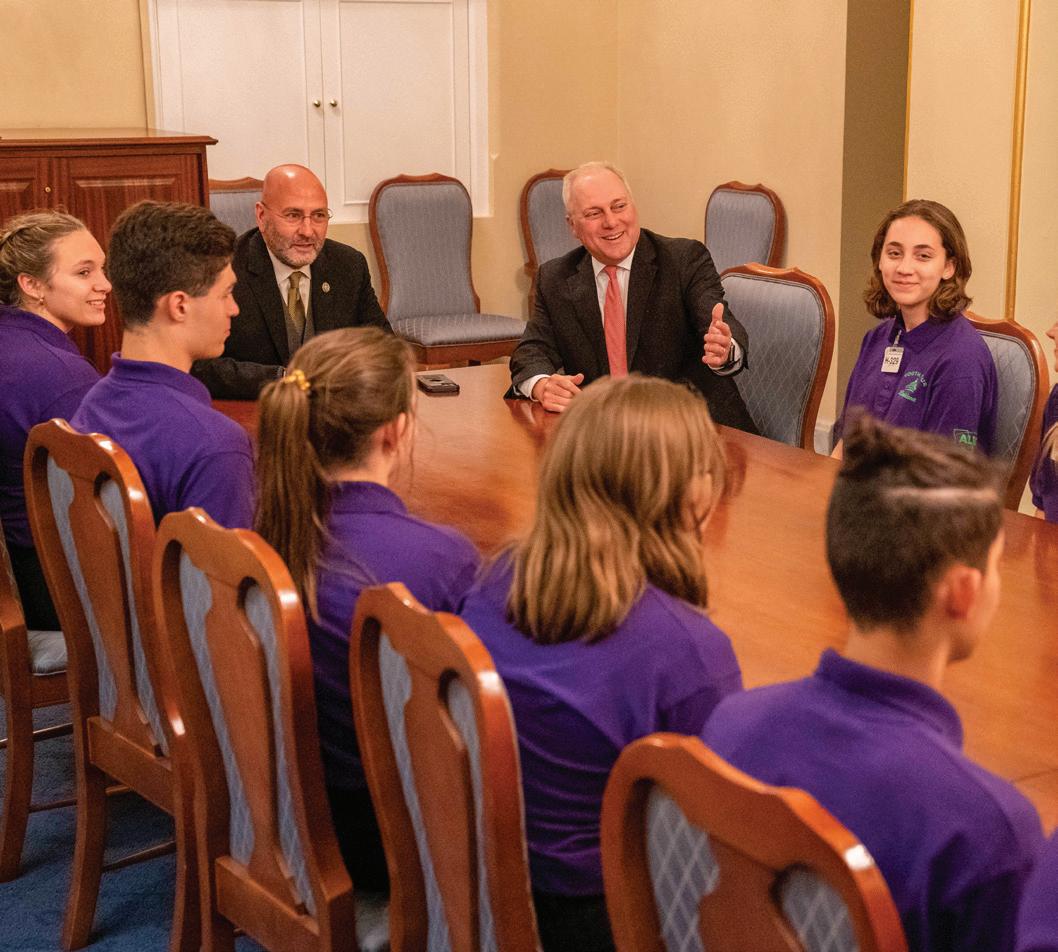








Other than seeing the sights in Washington, D.C., and learning from various leaders, Youth Tour students are quick to mention they enjoy the new friendships they form over the week. This friendmaking process isn’t just fun, however. It has lasting benefits as well.

“I genuinely learned a lot about making friends,” Lillie says. “I came into the Youth Tour with no one else from my school, but I was so blessed to meet many other people including the other participants from my co-op, and now we still try to see each other once or twice a year. I was able to use this experience of making friends when I decided to go out of state for college where I knew maybe three other people. The tour prepared me to be bold and put myself out there when meeting new people.”
Madelyn agrees with Lillie’s take on the specialness of Youth Tour friendships.
“My absolute favorite thing was getting to meet so many new people who share the same interests as me and making lifelong connections and friendships with many of them,” she says.
Beauregard Electric Cooperative Inc.

Samantha Baker, Audrey Bryant and Samantha Parks






Jeff Davis Electric Cooperative

Heath Hardesty and Khye Hornsby


South Louisiana Electric Cooperative Association
Madeleine Boudreaux and Presley Blanchard


Washington–St. Tammany Electric Cooperative
Lylah Crain and Holly Melton











Samantha found the diversity of experiences and perspectives among the participants especially interesting.
“One of the most significant takeaways from the tour was the importance of reaching out and forming connections with others,” Samantha says. “I realized that you can quickly form strong bonds with people if you’re willing to try, and everyone has more depth to them than initially meets the eye. I’m looking forward to applying this lesson in college, where I hope to be more outgoing and build meaningful relationships, rather than sticking to my usual reserved nature.”




Conley witnesses the friendships blooming and strengthening on each year’s tour.



“Even for those who have been to D.C. before with family or school, this trip is still incredibly special. It’s different,” she says. “Traveling with about 15 other delegates from across Louisiana, spending seven days together on a bus, learning about the cooperative business model, gaining valuable life skills and stepping outside their comfort zones, all of that creates something unique. Along the way, they build lifelong friendships and unforgettable memories. Then there’s Youth Day, where delegates join students from 44 other states to trade pins and connect with peers from all over the country. Whether it’s your first time in D.C. or not, this trip truly is a once-in-alifetime experience.”



The Youth Tour can even help set a new path for participants’ futures.
Samantha, who just began her freshman year at Northwestern State University’s Scholars’ College in Natchitoches, decided to pursue a degree in criminal justice.

“The Washington Youth Tour experience has also inspired me to explore study abroad programs, fueling my desire to engage with diverse cultures and perspectives globally,” Samantha says.






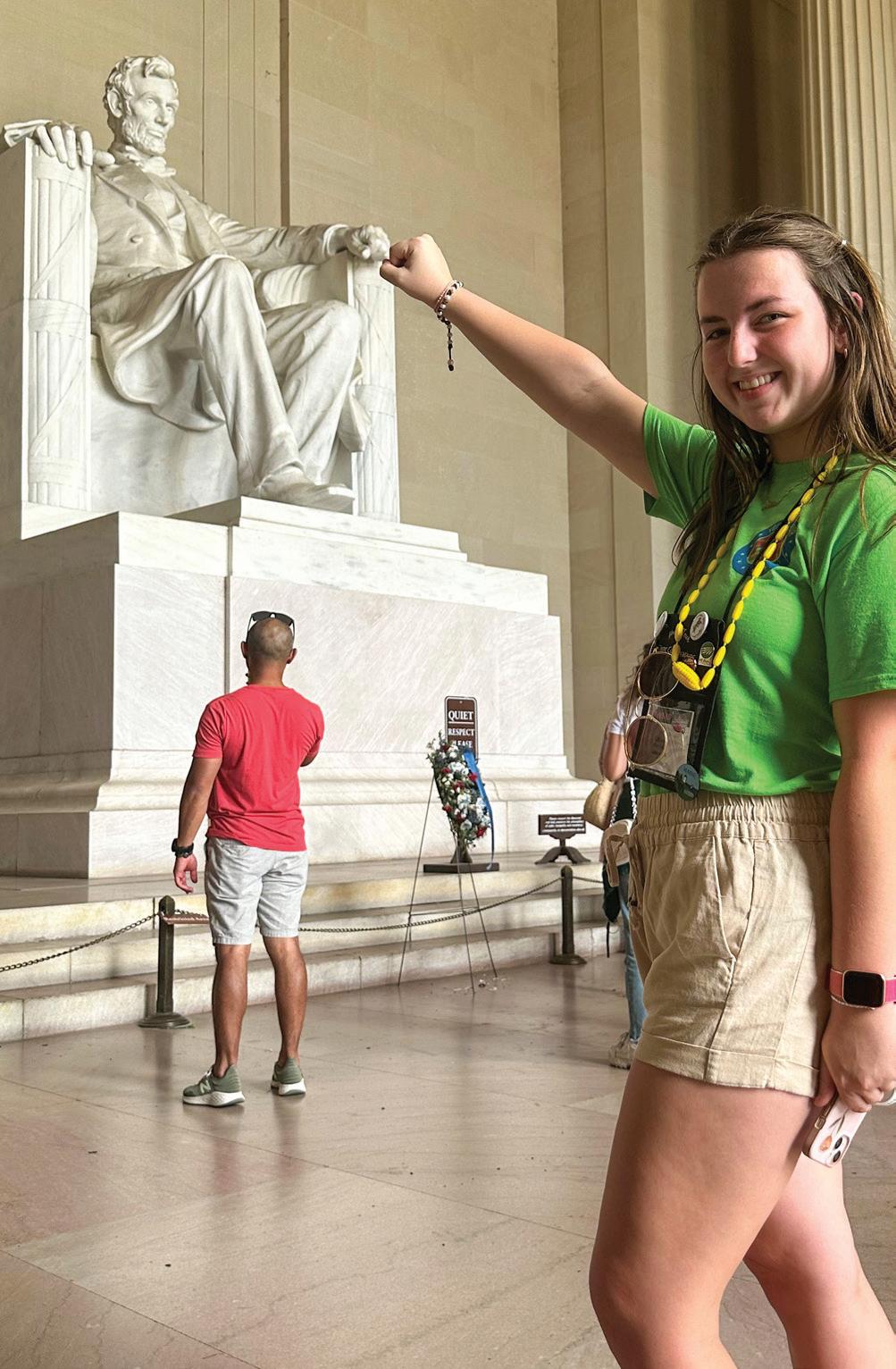


While the friendships, leadership workshops, deep dive into the history and current efforts of electric cooperatives, and aweinspiring sights make indelible impressions on these young Louisianans, sometimes it’s a simple, unexpected phrase that really hits home and becomes a guiding light as they progress through the rest of their formal education and then into lives as young adults.
Madelyn says one of the most impactful things she learned came from one of the keynote speakers, Mike Schlappi, a multiple Paralympic medalist and motivational speaker.






“During his speech, he told us, ‘Takers eat well, but givers sleep well,’” she says. “To this day, this excerpt still truly resonates with me. As a leader within my community, it is important to have a reminder that giving to others will take you much further in life than taking what others deserve.”















































































































T I R E D O F C LU T T E R ?
T I R E D O F C LU T T E R ?
G O P A P E R L E S S ! G O P A P E R L E S S !


I N S TA NT AC C E S S TO YO U R B I L L S A NY T I M E , A NY W H E R E S E C U R E A N D E C O - F R I E N D LY D E L I V E RY

E A S Y O N L I N E PAY M E NTS
S C A N T H E Q R C O D E TO E N R O L L N O W !













































and interactive sessions:
• Lineman Rodeo—A close-up look at the skills and safety practices of lineworkers.
• Government in Action—A session exploring how government and policy intersect with the energy sector.
• Electrical Safety and Co-op Careers—A practical overview of safety protocols and career opportunities within electric cooperatives.
• Co-opoly—A cooperative-themed game that taught the principles and challenges of running a co-op.
• Trip and Safety Debriefing—Final preparations and safety briefings ahead of their journey.
The day concluded with anticipation as the delegates prepared to board a charter bus at 5 a.m. the next day, joining fellow Louisiana and Maine students for the trip of a lifetime. Account No. 168483 001
After a full day of travel, our Youth Tour delegates arrived in Washington, D.C., ready to begin their adventure. The journey included a scenic stop at the Natural Bridge in Virginia, where delegates enjoyed lunch and took in the breathtaking views.

Beauregard Electric Cooperative Inc. congratulates this year’s Youth Tour delegates—Samantha Parks, Audrey Bryant and Samantha Baker—who embarked on an unforgettable journey to Washington, D.C.


These students represented our community through the Youth Tour program, a once-in-a-lifetime opportunity to explore the nation’s capital, engage with leaders and connect with other young ambassadors from across the country. Account No. 130347 001

Before setting off for Washington, D.C., the delegates took part June 14 in an orientation hosted by BECi and the Association of Louisiana Electric Cooperatives. The orientation offered a deep dive into the world of electric cooperatives and the vital role they play in communities. The delegates participated in a variety of hands-on





The group also paused for photos at landmarks such as the “LOVE” sculpture and the “Welcome to Virginia” sign—capturing the spirit of camaraderie that defines the Youth Tour experience.
On Day 2, the delegates visited the Capitol, where they learned firsthand how civic engagement can shape communities. The visit was educational and inspiring as delegates met with several influential leaders who shared insights on public service and community impact.
Special thanks go to Reps. Clay Higgins and Julia Letlow and staff from House Speaker Mike Johnson’s office for making time to speak with the students. These conversations highlighted opportunities for internships, leadership development and ways young people can make a difference in their communities.











Exploring the Heart of American History Day 3 brought our delegates face-to-face with iconic landmarks and solemn memorials. Dressed in their signature green shirts, the group visited Arlington National Cemetery, The Holocaust Museum, The White House, The Lincoln Memorial, World War II Memorial, Washington Monument and the Tuesday Sunset Parade at the U.S. Marine Corps Memorial.
With more than 17,000 steps logged, the delegates’ enthusiasm after the first full day of touring was palpable. Account No. 88671444 002
Immersive Learning and Cultural Exploration Day 3 was packed with experiences that deepened the delegates’ understanding of American history, culture and civic responsibility. The group visited significant sites, such as The Marine Corps Museum, The National Museum of African American History and Culture, and Ford’s Theatre. They also participated in Youth Day.
From museum exhibits to group discussions, delegates connected the past with their potential to shape the future.
Farewell, D.C.—Homeward Bound
Delegates spent their final day exploring the National Museum of American History and Natural History Museum. From historic artifacts to inspiring exhibits— including a memorable shark display—the day offered a blend of education and fun.





OPPOSITE PAGE: The three delegates spend a day at the nation’s capital, where they met with representatives.




After goodbyes to new friends, the group boarded the bus for the journey back home. With memories made, lessons learned and friendships formed, the delegates returned to Louisiana ready to lead.























The 2025 Youth Tour was more than just a trip, it was a journey of discovery, leadership and empowerment. From orientation in Louisiana to the halls of Congress and the monuments of Washington, D.C., delegates embraced every opportunity to learn, connect and grow.






BECi is proud to support these exceptional young leaders and looks forward to seeing the impact they will make in their communities and beyond.





































By Drew Woolley










ages, cooperatives have learned a few helpful tricks to resonate with younger audiences. Hands-on activities, such as asking kids to look through their backpacks for electronic devices and calculating how much energy they use, can drive home just how much electricity they use in their daily lives. Meanwhile, avoiding technical terms like “energy efficiency” can help saving energy feel less daunting and more fun.

Everyone likes finding ways to save on their energy bill. But watching the thermostat like a hawk, turning off lights behind everyone in the house and sweating an investment in energy-efficient appliances isn’t much fun, especially when you’re trying to get the kids to play along. Fortunately, electric cooperatives have been working to make energy savings more approachable for many years. After decades of educating kids of all







AIGENERATED ILLUSTRATION
BY FREEPIK/BRANDON POMRENKE


Even so, some of the most effective ways to drive home the importance of energy conservation are the routine reminders members may have heard from their parents growing up. Luckily, there are still plenty of ways to teach your kids the importance of energy conservation while having fun as a family.





Here are some fun ways to encourage energy efficiency and conservation at home: Cook a family-powered dinner. Have the whole family help cook dinner with one rule: No electricity is allowed. Avoid using major kitchen appliances like electric ovens, blenders, mixers or
microwaves to teach kids about common ways your family uses electricity during peak demand times. Top it all off with some no-bake treats.




Take turns on power patrol. Every child enjoys being in charge from time to time. Take turns letting everyone in your family be responsible for enforcing good energy habits around the house for a week. You can even set up a point system for every time they notice a light left on in an empty room, unplug unused electronics chargers or adjust the thermostat to a more efficient setting. Offer prizes and rewards to encourage them to be mindful of energy use every day.








Build an energy-efficient dream home. Encourage everyone to design their dream home with energy-saving features in mind. This is a great way to introduce ideas like solar panels, efficient appliances and sustainable building materials. Break out the crayons and art supplies to bring their homes to life, or use household crafts to build models.











Play energy-saving bingo. Make bingo cards with squares for energysaving actions like using natural light instead of lamps or ceiling lights, unplugging devices, turning off lights and cooling off the temperature by opening a window. Kids can cross out each square as they complete each task, and the first one to bingo gets a prize.








Have power-free fun. Designate one night a week as power-free time when everyone in the family turns off phones, computers and TVs together. Play a board game, spend time reading your favorite books or enjoy some outdoor activities technology-free. Save on your electric bill, teach the importance of reducing energy use during peak periods and get some valuable family time all at once.




Make an energy-saving scavenger hunt. Make up a list of energy-saving practices, such as updating light fixtures with LED bulbs, turning off lights in empty rooms and unplugging





unused devices. Challenge your kids to search the house and check off an example of each scavenger hunt item. You can celebrate with small prizes or treats for each energy-efficient discovery they make along the way.






Create energy-efficient art. Kids enjoy seeing their artwork displayed, so put those creative skills to work on energy-efficient reminders around the house. Spend arts and crafts time teaching your kids about some of the steps they can take to save energy around the house. Make fun signs to serve as daily reminders to close the fridge quickly, turn off lights and only change the thermostat as a last resort.





every time someone spots an unused device still plugged in. Set a goal and reward yourselves when everyone keeps phantom energy use down.


No matter what you do to keep energy savings fun around the house, the most important part of instilling good habits is reliably reminding your family of the little steps they can take to be more efficient. Consistency is key.


Keep “phantom power” waste bottled up. Phantom energy—the electricity devices use even when they are turned off— can be a tricky concept for kids to understand. Illustrate it in a fun way by adding marbles to a glass bottle or jar























